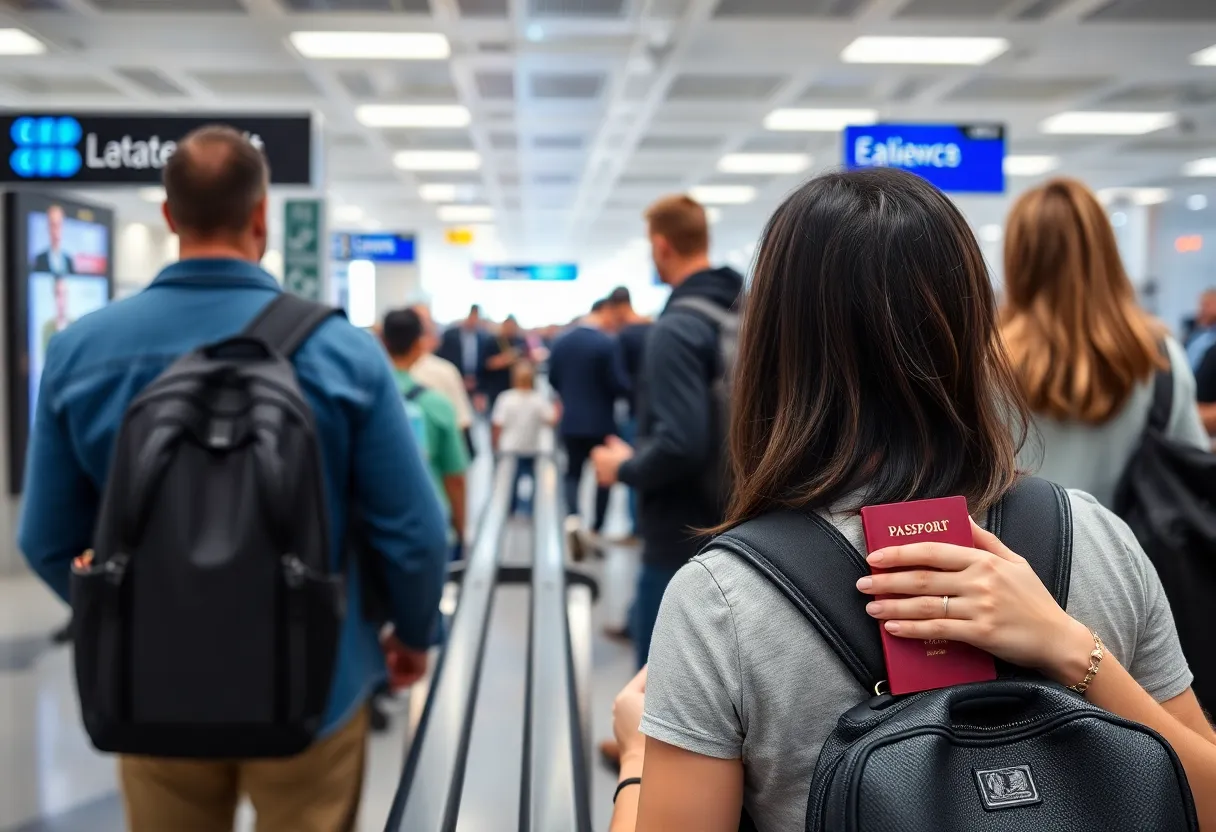News Summary
Starting May 7th, travelers in the U.S. will face new TSA checkpoint requirements. While REAL IDs provide smoother travel, standard IDs will undergo additional scrutiny. About 81% of travelers have complied, but alternatives like passports remain valid. Concerns about privacy also arise with these new regulations as states work to assist residents in securing REAL IDs before the deadline.
Get Ready for a New Travel Requirement!
Starting May 7th, travelers in the United States should be prepared for some changes when heading through TSA checkpoints. If you don’t have a REAL ID, you can still catch your flight, but be prepared for a little extra attention from airport security. That’s right—additional scrutiny will be in play for those with standard IDs.
What’s the REAL ID Anyway?
For those who aren’t in the loop, a REAL ID is a state-issued driver’s license or ID card that has been deemed a more secure form of identification by the Department of Homeland Security (DHS). This initiative first came about after the recommendations from the 9/11 Commission and was signed into law way back in 2005. It aims to enhance security and reduce fraudulent use of identification, especially in travel and access to federal facilities.
An Update on Compliance
Currently, about 81% of travelers are already using IDs that meet REAL ID requirements. However, for those who don’t—don’t fret! You can still board your flight, but you might have to navigate through a different line or face an additional screening step at the TSA checkpoint.
What Can You Use If You Don’t Have a REAL ID?
If you haven’t been able to snag a REAL ID yet, there are alternative forms of identification you can still use at checkpoints. These include passports and tribal IDs, which should make things a bit easier for those who still need to travel.
State-Specific Issues
It’s important to note that the compliance levels among states can vary, with some states like Michigan, Minnesota, New York, Vermont, and Washington offering enhanced ID cards that allow for certain types of cross-border travel. This means that travelers in these states may have more flexible identification options.
Concerns About Privacy
Despite the good intentions behind the REAL ID laws, there are voices of concern from civil rights groups. Critics, including the ACLU of New York, worry about the implications of creating a national identification system and the potential for privacy breaches. They argue that REAL ID might not effectively deter terrorism and could make vulnerable populations feel marginalized and more hesitant to interact with law enforcement.
What’s Being Done to Help?
As the deadline approaches, some states are working hard to help residents secure their REAL IDs. For example, California is extending DMV office hours to accommodate the surge in people seeking these IDs. This is a great move, especially since many have reported long wait times at government offices, stressing the urgency of getting a REAL ID before it’s required.
Final Thoughts
As flight schedules get busier, make sure your travel identification is up to date. If you have a REAL ID, you’re all set for smooth sailing through TSA. If you’re still in the process of getting one, take note of the alternatives like passports or tribal IDs, but be prepared for a bit of a kerfuffle at the security line. Remember, the goal here is to keep everyone safe, and these measures are designed to bolster security in our skies.
So, mark your calendars for May 7th, and make sure you’re traveling smart!
Deeper Dive: News & Info About This Topic
- The Guardian: Kristi Noem and the REAL ID
- New York Times: REAL ID Requirements and Extra Screening
- ABC News: Travelers Without REAL ID Can Fly for Now
- Reuters: Travelers Without REAL ID Will Be Allowed to Fly
- Axios: REAL ID Enforcement Deadline Approaches
- Wikipedia: REAL ID Act
- Google Search: REAL ID
- Google Scholar: REAL ID Security
- Encyclopedia Britannica: REAL ID Act
- Google News: REAL ID Travel

Author: STAFF HERE PETERSBURG WRITER
The ST PETERSBURG STAFF WRITER represents the experienced team at HEREStPetersburg.com, your go-to source for actionable local news and information in St Petersburg, Pinellas County, and beyond. Specializing in "news you can use," we cover essential topics like product reviews for personal and business needs, local business directories, politics, real estate trends, neighborhood insights, and state news affecting the area—with deep expertise drawn from years of dedicated reporting and strong community input, including local press releases and business updates. We deliver top reporting on high-value events such as Grand Prix of St. Petersburg, Localtopia, and SHINE Mural Festival. Our coverage extends to key organizations like the St. Petersburg Area Chamber of Commerce and St. Pete Downtown Partnership, plus leading businesses in finance, manufacturing, and healthcare that power the local economy such as Raymond James Financial, Jabil, and Bayfront Health St. Petersburg. As part of the broader HERE network, including HEREJacksonville.com, HEREOrlando.com, HERETallahassee.com, and HERETampa.com, we provide comprehensive, credible insights into Florida's dynamic landscape.





